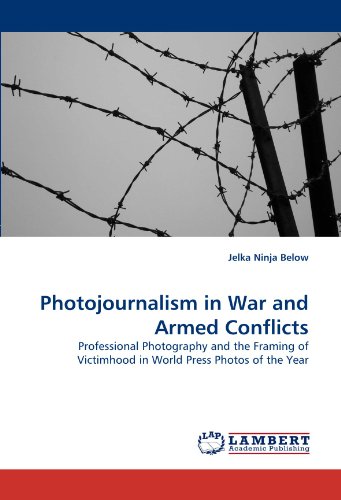Top 9 recommendation framing languages and literacies for 2018
When you looking for framing languages and literacies, you must consider not only the quality but also price and customer reviews. But among hundreds of product with different price range, choosing suitable framing languages and literacies is not an easy task. In this post, we show you how to find the right framing languages and literacies along with our top-rated reviews. Please check out our suggestions to find the best framing languages and literacies for you.
1. Framing Languages and Literacies: Socially Situated Views and Perspectives
Feature
Used Book in Good ConditionDescription
In this seminal volume leading language and literacy scholars clearly articulate and explicate major social perspectives and approaches in the fields of language and literacy studies. Each approach draws on distinct bodies of literature and traditions and uses distinct identifiers, labels, and constellations of concepts; each has been taken up across diverse global contexts and is used as rationale and guide for the design of research and of educational policies and practices. Authors discuss the genesis and historical trajectory of the approach with which they are associated; offer their unique perspectives, rationales, and engagements; and investigate implications for understanding language and literacy use in and out of schools. The premise of the book is that understanding concepts, perspectives, and approaches requires knowing the context in which they were created, the rationale or purpose in creating them, and how they have been taken up and applied in communities of practice. Accessible yet theoretically rich, this volume is indispensible for researchers, students, and professionals across the fields of language and literacy studies.
2. Re-framing Literacy: Teaching and Learning in English and the Language Arts (Language, Culture, and Teaching Series)
Description
Imaginative and attractive, cutting edge in its conception, this text explicates a model for the integration of language arts and literacy education based on the notion of framing. The act of framing not frames in themselves provides a creative and critical approach to English as a subject. Re-framing Literacy breaks new ground in the language arts/literacy field, integrating arts-based and sociologically based conceptions of the subject. The theory of rhetoric the book describes and which provides its overarching theory is dialogic, political, and liberating.
Pedagogically, the text works inductively, from examples up toward theory: starting with visuals and moving back and forth between text and image; exploring multimodality; and engaging in the transformations of text and image that are at the heart of learning in English and the language arts. Structured like a teaching course, it is designed to excite and involve readers and lead them toward high-level and useful theory in the field. Offering an authoritative, clear guide to a complex field, it is widely appropriate for pre-service and in-service courses globally in English and language arts education.
3. Framing in Discourse
Description
The concept of framing has been pivotal in research on social interaction among anthropologists, sociologists, psychologists, and linguists. This collection shows how the discourse analysis of frames can be applied to a range of social contexts. Tannen provides a seminal theoretical framework for conceptualizing the relationship between frames and schemas as well as a methodology for the discourse analysis of framing in interaction. Each chapter makes a unique theoretical contribution to frames theory while showing how discourse analysis can elucidate the linguistic means by which framing is accomplished in a particular interactional setting. Applied to such a wide range of contexts as a medical examination, psychotic discourse, gender differences in sermon performance, boys' "sportscasting" their own play, teasing among friends, a comparison of Japanese and American discussion groups, and sociolinguistic interviews, the discourse analysis of framing emerges here as a fruitful new avenue for interaction analysis.4. Framing Public Life: Perspectives on Media and Our Understanding of the Social World (Routledge Communication Series)
Feature
Used Book in Good ConditionDescription
This distinctive volume offers a thorough examination of the ways in which meaning comes to be shaped. Editors Stephen Reese, Oscar Gandy, and August Grant employ an interdisciplinary approach to the study of conceptualizing and examining media. They illustrate how texts and those who provide them powerfully shape, or "frame," our social worlds and thus affect our public life. Embracing qualitative and quantitative, visual and verbal, and psychological and sociological perspectives, this book helps media consumers develop a multi-faceted understanding of media power, especially in the realm of news and public affairs.5. Think/Point/Shoot: Media Ethics, Technology and Global Change
Description
Think/Point/Shoot gives students a thorough overview of the role of ethics in modern media creation. Case studies emphasize the critical issues in global media ethics today in all stages of media creation from preproduction research and development, to production and post production.A must read for students interested in media production, documentary production, and all aspects of post production, Think/Point/Shoot is designed to introduce the topic of "ethics" to those interested in hands-on production. Containing rich and lively introductions and chapters written by Annette Danto, Mobina Hashmi and Lonnie Isabel, the volume also features practicing filmmakers, journalists, media creators and scholars who provide insight into dealing with real-world ethical dilemmas. Contributing authors include: Jon Alpert, Christine Choy, Yoruba Richen, Tami Gold, Terilyn Shropshire, Sam Pollard, Mathilde Bonnefoy, Samir Chopra, Scott Sinkler, K. Hariharan.
For this era, digital imagery, sounds, and web communication have opened doors to sharing thoughts and ideas instantaneously to potentially vast audiences. This presents exciting opportunities, but also serious ethical, legal, and social challenges. The cases and exercises found in this book are applicable to the current media field while still remaining grounded in strong ethical theory. Think/Point/Shoot explains the challenge of communicating a story to a worldwide audience while maintaining ethical standards.
A companion website provides additional resources for students and instructors:
- media ethics game
- chapter summaries and case studies
- important forms
Instructors will also find:
- classroom exercises
- PowerPoints
- video from the "Global Media Ethics" Conference from March 2013
6. Framing Library Instruction: A View from Within and Without (ACRL Publications in Librarianship #61)
Feature
Used Book in Good ConditionDescription
Undergraduate students face innumerable challenges as they enter a world with new and different academic demands. Their success, to a large degree, depends on their being able to navigate the informational maze and to make sense of what other people have written, said, and shown. This book presents a complete examination of the cognitive aspects of students perceptions and uses of information. Examples that can be adapted for courses or class sessions are an integral part of the book. This volume is intended to stimulate the profession s conversation about directions that instruction can take in the future. It is suitable for academic libraries and for library and information graduate school libraries.7. Obama, the Media, and Framing the U.S. Exit from Iraq and Afghanistan
Description
Situating Obamas end-of-war discourse in the historical context of the 2001 terrorist attacks, Obama, the Media, and Framing the U.S. Exit from Iraq and Afghanistan begins with a detailed comparison with the Bush war-on-terror security narrative before examining elements of continuity and change in post-9/11 elite rhetoric. Erika King deftly employs two case studies of presidential and media framing - the weeks surrounding the formal announcements of Obamas December 2009 'surge-then-exit' strategy from Afghanistan and the end of combat operations in Iraq in August 2010 - to explore the role of mass media in presenting presidential narratives of war and finds evidence of an interpretive disconnect between the media and a president seeking to present a more nuanced approach to keeping America safe. Eloquently scrutinizing Obamas discourse on the U.S. exit from two post-9/11 wars and contrasting the presidential endgame frame with the U.S. mainstream medias narratives of the wars meaning, accomplishments, and denouement provides a unique combination of qualitative content analysis and topical case studies and makes this volume an ideal resource for scholars and researchers grappling with the complicated and ever-evolving nexus of war, the president, and the media.8. Framing Dance Writing: A Corpus Linguistics Approach
Feature
Framing Dance WritingDescription
Dance, as a specialist discipline, is examined in the context of research in Corpus Linguistics that suggests that the lexicon used by those in a specialist discipline offers insight into the concepts and ideologies of that discipline. In this book dance writing is analysed through empirical data generated by a corpus of written dance texts. Lexical patterns, conceptual metaphor, and an ontological hierarchy are discussed in context within the discipline of Dance. Findings are tested through empirical data generated by a case study of one choreographer, Bill T. Jones, and from a corpus of texts about Jones' work, Still/Here (1994). Data generated from descriptive and interpretive analyses of Still/Here with a consideration of the work as autobiographical narrative provides a basis for a discussion of the shift in context from the dance work to a review written by one critic, Arlene Croce, and the privileging of interpretation over description in dance writing.9. Photojournalism in War and Armed Conflicts: Professional Photography and the Framing of Victimhood in World Press Photos of the Year












Recent Comments